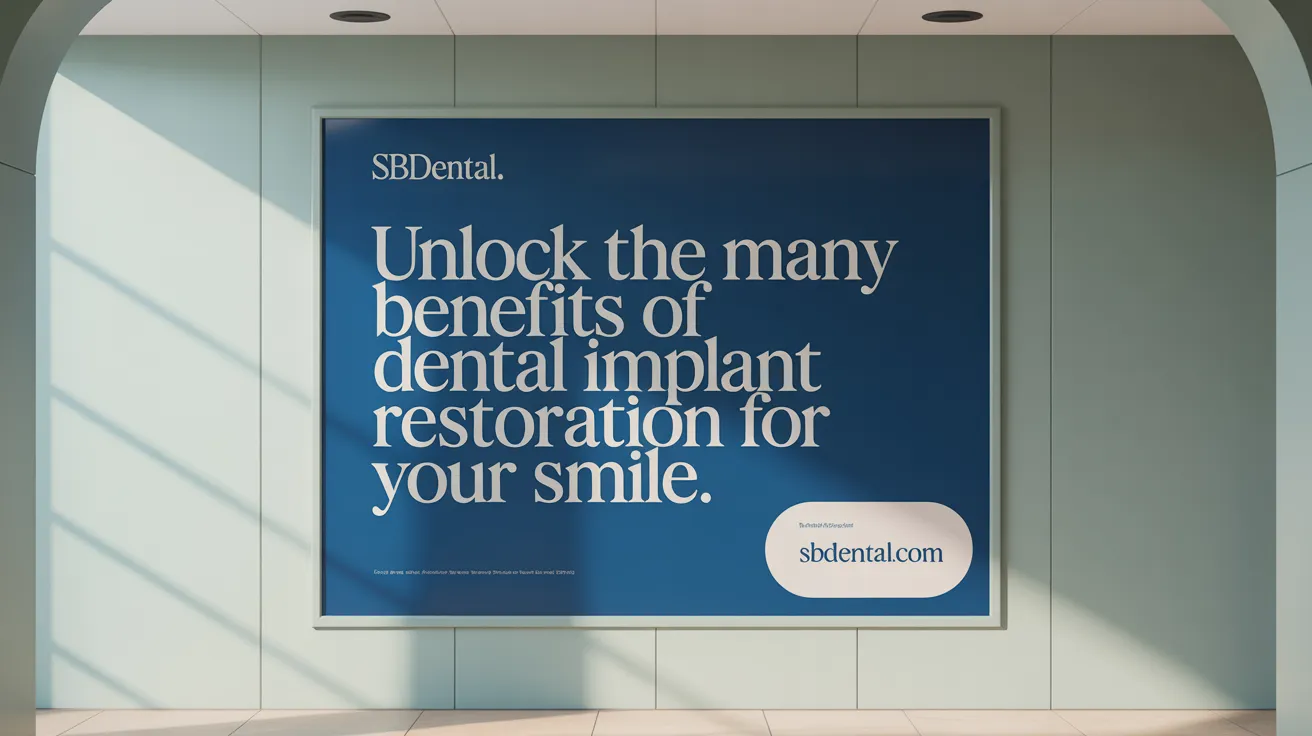Introduction to Dental Implant Restoration
Dental implant restoration has revolutionized tooth replacement, offering patients a natural, durable, and long-lasting solution that surpasses traditional options. This article explores the multifaceted benefits, procedure, comparisons, and financial aspects of dental implants, aiming to educate and guide those considering this advanced restorative option.
Comprehensive Benefits of Dental Implant Restoration
 Dental implant restoration provides a multitude of advantages that significantly enhance oral health, appearance, and everyday functionality. One of the primary benefits is its ability to preserve jawbone density. When a tooth is lost, the underlying bone tends to deteriorate over time, causing facial sagging and a prematurely aged appearance. Implants act like natural tooth roots, encouraging bone growth and preventing bone resorption, which maintains facial structure and overall oral stability.
Dental implant restoration provides a multitude of advantages that significantly enhance oral health, appearance, and everyday functionality. One of the primary benefits is its ability to preserve jawbone density. When a tooth is lost, the underlying bone tends to deteriorate over time, causing facial sagging and a prematurely aged appearance. Implants act like natural tooth roots, encouraging bone growth and preventing bone resorption, which maintains facial structure and overall oral stability.
In addition to supporting bone health, dental implants are designed to look, feel, and function like natural teeth. This natural appearance boosts confidence and encourages patients to smile, speak, and eat comfortably without worry. Unlike traditional bridges, implants do not require adjacent healthy teeth to be modified, preserving natural tooth tissue and reducing the risk of future dental problems.
Functional improvements are equally notable. Implants restore full chewing power, allowing individuals to enjoy a wider variety of foods that might be difficult with dentures or worn-out crowns. They also improve speech clarity, which can be affected by missing teeth or unstable dentures.
Overall, the benefits of dental implant restoration extend beyond mere aesthetics, contributing to improved oral health, enhanced facial appearance, and restored functionality. With proper care, these restorations can last a lifetime, making them a highly effective and long-lasting solution for missing teeth, thereby significantly boosting quality of life and oral well-being.
Dental Implant Procedure: What to Expect

What is the dental implant restoration procedure, and what are the steps involved? What can patients expect during the process?
The process of dental implant restoration is a detailed and carefully planned series of steps designed to replace missing teeth with a natural-looking, durable solution. It begins with a comprehensive consultation where the dentist evaluates the patient's oral health and bone density through imaging, often using 3-D x-rays for bone structure. This helps determine if the patient is a suitable candidate or if preparatory procedures like bone grafting are necessary.
Next, the surgical phase involves surgical placement of a titanium dental implant — the implant — into the jawbone. This is done under local anesthesia, and the procedure generally involves making an incision in the gum tissue to access the bone, then inserting the implant into a pre-drilled hole. Afterward, the gum tissue is sutured over the implant, and healing begins.
Following surgery, a critical phase called osseointegration occurs. During this healing period, which lasts about three to six months, the jawbone gradually fuses with the implant. This biological process ensures that the implant is securely anchored, providing a stable foundation for the final tooth.
Once osseointegration is complete, the next step is attaching an abutment connector — a small connector that links the implant to the crown. The final restoration, usually a porcelain crown, is then custom-made to match the shape, size, and color of the surrounding natural teeth. This placement is quick and performed with minimal discomfort.
Throughout the entire process, patients can expect some mild discomfort, swelling, and soreness post-surgery, which typically resolves within a few days. It is essential to follow post-operative instructions, including maintaining good oral hygiene, avoiding hard or sticky foods, and attending regular follow-up visits. Overall, the procedure, although involving multiple stages, results in a long-lasting and natural-looking replacement for missing teeth.
Dental Implants Versus Dentures: Making the Right Choice

Why should someone choose dental implant restoration over other tooth replacement options such as dentures?
Dental implant restoration offers a more permanent, stable, and natural-feeling solution than dentures, closely mimicking natural teeth in function and appearance. Unlike dentures, implants help preserve jawbone density, preventing bone loss and facial collapse over time. Although implants require surgery and have a higher initial cost, they tend to last a lifetime with proper care, making them more cost-effective long-term.
Implants do not slip or cause sore spots like dentures, providing greater confidence in chewing and speaking. Overall, dental implants are an optimal choice for those seeking durability, natural aesthetics, and preservation of oral and facial health.
How do dental implants compare with alternative solutions like dentures in terms of advantages, disadvantages, and suitability?
Dental implants generally offer superior stability, durability, and bone preservation compared to dentures, closely mimicking natural teeth in appearance and function. They are suitable for individuals with sufficient jawbone density and healthy gum tissue, providing long-term support and reducing the risk of bone loss, which dentures do not prevent.
However, implants involve surgical procedures, higher upfront costs, and longer treatment times, making them a more invasive and expensive option initially. Dentures, on the other hand, are less invasive, more affordable, and easier to fit, but they may cause bone deterioration over time, slip or cause sores, and require regular maintenance.
The choice between implants and dentures depends on individual health, budget, and preferences, with implants generally preferred for their long-lasting benefits and natural feel.
Financial Considerations and Planning for Dental Implants
 When considering dental implant restoration, understanding the costs involved is crucial for effective planning. The overall expense is shaped by multiple factors including the number of implants needed, the choice between different implant materials such as titanium dental implants or zirconia, and the type of final restoration—whether crowns, bridges, or full-mouth implants. Additional procedures like bone grafts or sinus lifts, often necessary to ensure sufficient support, can significantly increase costs.
When considering dental implant restoration, understanding the costs involved is crucial for effective planning. The overall expense is shaped by multiple factors including the number of implants needed, the choice between different implant materials such as titanium dental implants or zirconia, and the type of final restoration—whether crowns, bridges, or full-mouth implants. Additional procedures like bone grafts or sinus lifts, often necessary to ensure sufficient support, can significantly increase costs.
Geographic location also affects pricing, with regional variations due to differences in living costs and local dental practice fees. Advanced imaging, precise surgical techniques, and high-quality materials used during the implant placement process add to the overall expenses. On average, a single dental implant can cost between $3,000 and $6,000, with full-mouth restorations reaching upwards of $60,000.
Patients should explore insurance options carefully, as many plans provide partial coverage mainly for the restorative component but rarely for the surgical placement itself. To ease the financial burden, various financing options are available, including payment plans through dental offices, third-party lenders like CareCredit or Cherry, and using Health Savings Accounts (HSAs) or Flexible Spending Accounts (FSAs).
Planning ahead by consulting with a qualified dental professional allows for customized cost estimates and helps identify the most suitable financing approach. Being aware of all potential costs upfront facilitates better preparation, making long-term dental health and aesthetics more accessible without financial surprises.
Ensuring Long-Term Success and Oral Health Maintenance
Candidate suitability and prerequisites
Suitable candidates for dental implants are those who are in good overall health and possess sufficient jawbone density, which is critical for the stability and integration of the implant. Ideal patients should have healthy gum tissue without active periodontal disease or significant tooth decay. Before proceeding with implants, individuals may need preparatory procedures such as bone grafting or sinus lifts if their jawbone volume is inadequate. Candidates must also abstain from smoking and excessive alcohol intake, as these habits can impair healing and interfere with osseointegration, the process by which the implant fuses with the bone. It is equally important to disclose all medical conditions and medications to ensure safe and successful treatment outcomes. Good oral hygiene practices and regular dental check-ups further enhance the chances of long-term success.
Aftercare and follow-up procedures
Post-implant care is vital for maintaining implant health and longevity. Patients should follow specific aftercare instructions provided by their dental professional, such as sticking to a soft diet initially, avoiding hard or spicy foods, and maintaining excellent oral hygiene. Gentle brushing with a soft toothbrush, daily flossing around the implant, and rinsing with saltwater are recommended starting from the day after surgery. Regular dental visits—typically every six months—are essential for professional examinations and cleanings. During these visits, the dentist can monitor for early signs of complications like peri-implantitis, inflammation, or bone loss. Protective measures such as wearing a nightguard may be advised if grinding or clenching is an issue. Prompt professional evaluation of any persistent pain, swelling, or changes around the implant can prevent failure and help ensure the implant remains functional for many years.
Long-term success and complication prevention
Dental implants boast high success rates, often exceeding 90-95% over a decade, making them a durable and reliable long-term solution. When properly maintained through diligent oral hygiene, regular dental checkups, and lifestyle modifications—like avoiding tobacco and hard foods—the lifespan of implants can extend well beyond ten years, even a lifetime. The primary benefits of implants include preserving jawbone density, preventing facial sagging, and supporting the stability of adjacent healthy teeth. Advances in implant technology and minimally invasive surgical techniques have further improved reliability and reduced potential complications. Despite their success, occasional issues such as infection, nerve injury, or loosening can occur. Early detection and professional intervention are crucial for addressing these problems promptly, thereby enhancing the implant's longevity and ensuring sustained oral health benefits.
Final Thoughts on Choosing Dental Implant Restoration
Dental implant restoration stands out as a superior solution for those seeking to replace missing teeth with a natural, durable, and functional alternative. From its significant oral health benefits and lifelike appearance to its high success rates and long-term cost-effectiveness, dental implants provide unmatched value. While the procedure requires time, surgical expertise, and financial planning, the rewards in enhanced quality of life and preserved oral health are compelling. Patients equipped with comprehensive knowledge about the procedure, maintenance, and candidacy criteria can make informed decisions, ultimately benefiting from restored confidence, improved functionality, and a lasting beautiful smile.
